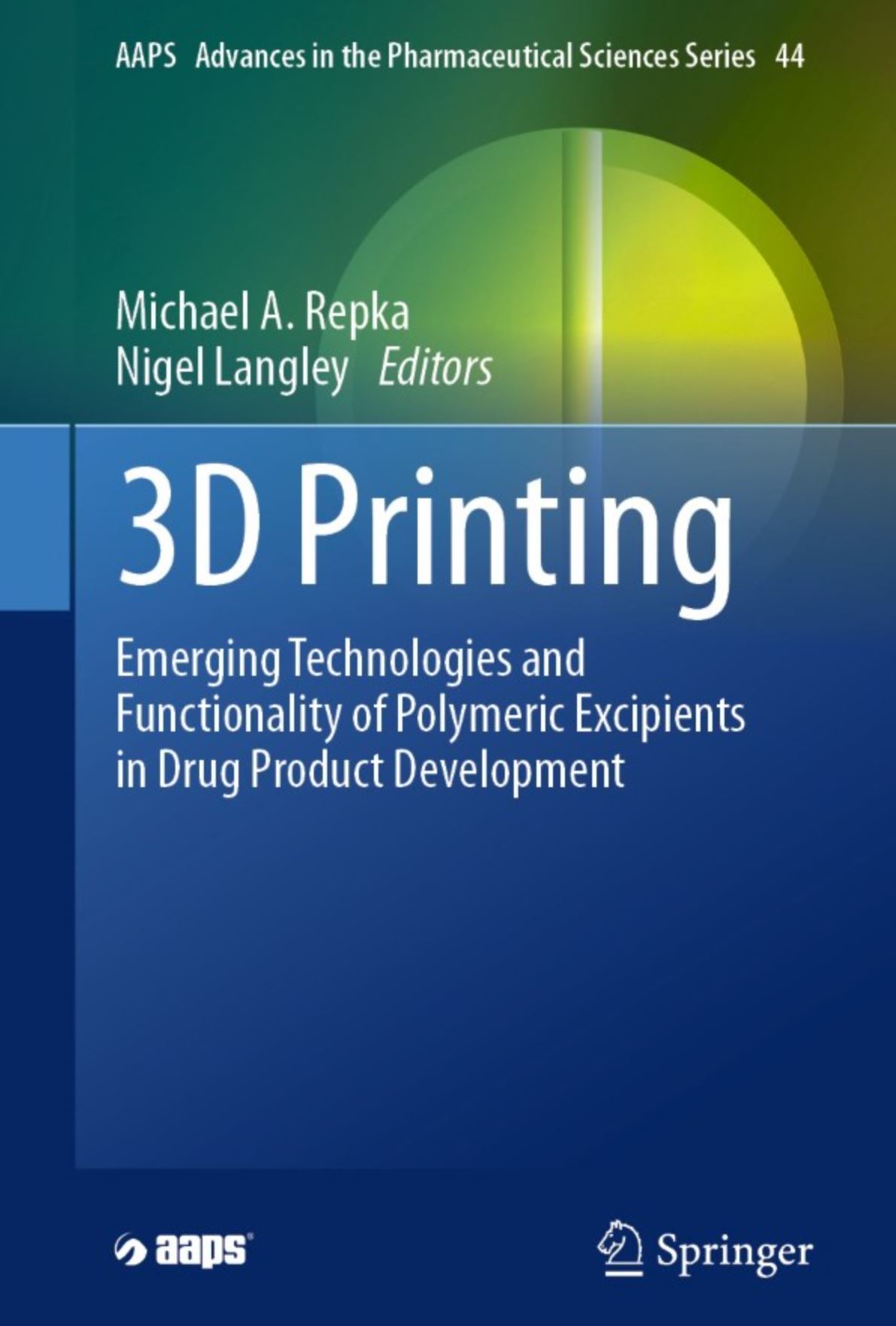3D Printing Emerging Technologies and Functionality of Polymeric Excipients in Drug Product Development – Part 4

See the new book, edited by Michael A. Repka, Nigel Langley
- Covers regulatory and manufacturing aspects of 3D printing in drug development
- Particular focus on hot melt extrusion and extruded filaments suitable for optimizing 3D printing
- Thorough short text and guide for use on the production line of 3D printing of pharmaceuticals
Description:
This inclusive text describes 3D Printing for pharmaceutical applications, including emerging 3D technologies. The book focuses on the functionality of the materials/biomaterials used for the preparation of dosage forms and devices, fundamentals for preparing these systems and novel applications using these additive manufacturing techniques. Also, the text includes clinical relevance and regulatory considerations for the future of personalized medicine.
Authored by experts with a broad range of experience, extensive insight into the science of 3D printing technology used to produce these systems is provided. Highlighting viewpoints from the academic, polymer excipient, equipment, product development and regulatory communities, this comprehensive text compiles input from industry thought leaders to illustrate strategies and technologies for applying techniques of additive manufacturing for drug product and device development while also providing insight into the path forward for the technology in years to come.
Chapter 10
Forging a Personalised Path: 3D Printing’s Role in Healthcare Transformation
The voyage towards revolutionising healthcare through digital technologies has launched, and its trajectory promises to reshape the contours of health and wellness for generations to come. The age of patient-centric medicine, enhanced accessibility and seamless healthcare experiences is upon us, propelled by the remarkable potential of 3D printing and its synergy with the digital realm. This chapter demonstrates that the future of healthcare is dynamic, personalised and readily available—an era where health is a shared aspiration and innovation is the driving force behind its realisation.
Awad, A., Basit, A.W., Gaisford, S., Goyanes, A. (2024). Forging a Personalised Path: 3D Printing’s Role in Healthcare Transformation. In: Repka, M.A., Langley, N. (eds) 3D Printing . AAPS Advances in the Pharmaceutical Sciences Series, vol 44. Springer, Cham. https://doi.org/10.1007/978-3-031-46015-9_10
Chapter 11
Future Prospects Including Novel Polymeric Excipients for 3D Printing of Pharmaceutical and Biomedical Applications
This chapter delves into the promising future prospects of 3D printing for pharmaceutical and biomedical applications, with a specific focus on novel polymeric excipients. As 3D printing continues to revolutionize drug and medical device manufacturing, the integration of innovative polymeric materials holds immense potential for creating customized dosage forms, implants, and tissue scaffolds. This overview highlights the evolving landscape of 3D printing technology, emphasizing the crucial role of cutting-edge polymeric excipients in enhancing drug delivery precision, therapeutic efficacy, and patient outcomes, thereby shaping the future of pharmaceutical and biomedical advancements.
Feng, S., Repka, M.A. (2024). Future Prospects Including Novel Polymeric Excipients for 3D Printing of Pharmaceutical and Biomedical Applications. In: Repka, M.A., Langley, N. (eds) 3D Printing . AAPS Advances in the Pharmaceutical Sciences Series, vol 44. Springer, Cham. https://doi.org/10.1007/978-3-031-46015-9_11
See the full book here:
Michael A. Repka, Nigel Langley, 3D Printing Emerging Technologies and Functionality of Polymeric Excipients in Drug Product Development, https://doi.org/10.1007/978-3-031-46015-9, ISBN 978-3-031-46017-3Due: 16 December 2024

